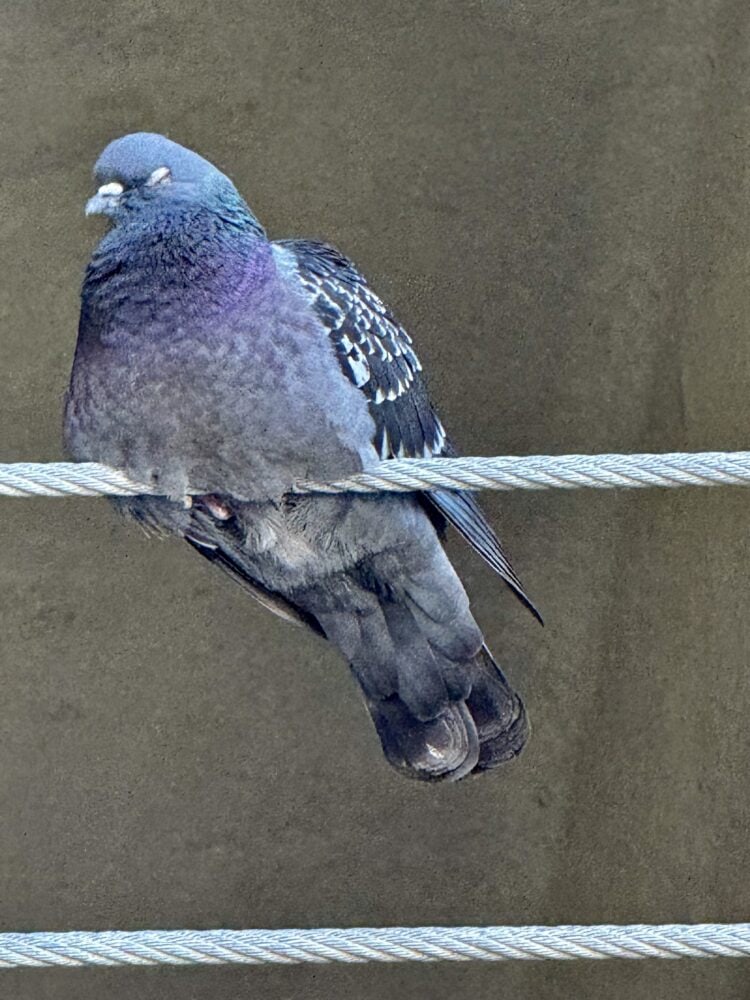Kukupa/Kereru
[flowplayer src=’https://focusingonwildlife.com/news/wp-content/uploads/2012/07/pigeon-lead-in.mp4′ width=640 height=480 splashend=show splash=’https://focusingonwildlife.com/news/wp-content/uploads/2012/07/penny56-30.jpg’ autoplay=false]
Wood Pigeon “coo”. Normally each call would be maybe 10 seconds apart. I have compressed for convenience. I hear this only occasionally, and generally late summer / autumn.
R09_0002
Southern Maori referred to our native pigeon as Kukupa, although the more common “Kereru” of Northern Maori is what this, the second largest pigeon in the world is generally known as. Wood Pigeon is its European name.
They are a forest bird and feed mainly on fruit, blossom and foliage.

They lay a single large egg, and the hatchling is fed from a milky throat secretion for it’s first few days. Pigeons were an important andhighly prized food of early Maori. Now they, like almost all native birds are completely protected, although the tongue in cheek name of “Illegal Tegals” might lead us to surmise they still make it into the pot from time to time. (Tegal is a NZ brand of table chicken)
They are quite common around the village, often perching quietly on power lines. Generally semi solitary or at most as a pair, in the autumn we start to see flocks of sometimes several dozen flying backward and forwards, seemingly aimlessly. And then they mostly vanish, having undertaken

the 20 odd mile flight back to the South Island, returning in the Spring. I think the flocking and random flight is a way of building up their strength and fitness, as generally they are heavy fliers. The cherry like fruit of native Miro Trees is a winter feed source, and there are lots of Miro trees on the Island. Our winters are normally much milder than on the mainland as well, so I can only surmise that there is something missing, or at least scarce locally that drives the majority to migrate.
This late summer period is when I also see occasional lone birds tumbling. They will pitch downwards in flight and then pull up steeply. Not quite falling over backwards in a full loop, but rather stalling and falling forward into normal flight again. I’ve never been able to capture this on camera, and have no idea exactly why they do it. I would like to think it’s just from the sheer joy of flying
Very occasionally we will see white individuals. Before I came to Stewart Island 43 years ago I had seen but one. However here there must be quite a strong recessive gene within the local population as there is usually one white bird around the village. I have never seen any indication that they pair, and they seem never to migrate out in the Autumn.
Peter Tait
Peter Tait is a professional nature guide based at Stewart Island, New Zealand, and he works primarily on Ulva Island Open Sanctuary. Peter has been resident on the Island for over 40 years and was one time Forest Ranger in Charge of Stewart Island. Fishing followed forestry and was in turn followed by Talisker, a 17m charter yacht. He is qualified Skipper Deep Sea Fishing Vessel. In addition to guiding Peter and his wife Iris are hosts at Sails Ashore Lodge.


Leave a Reply